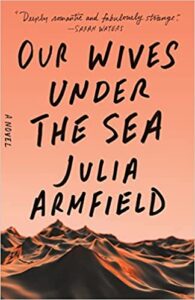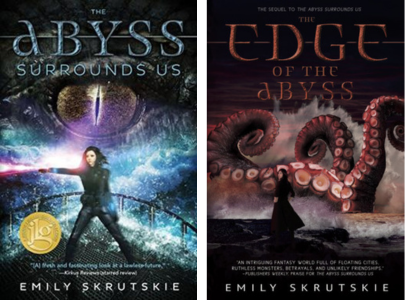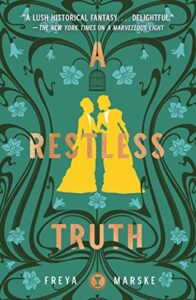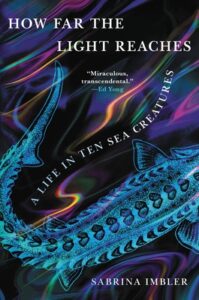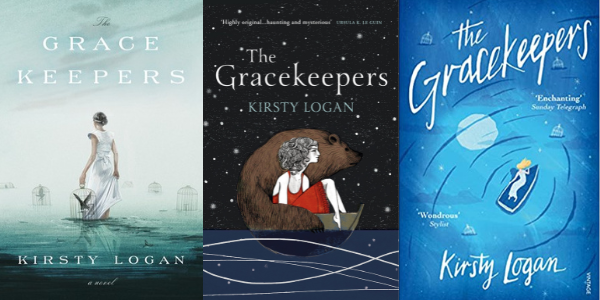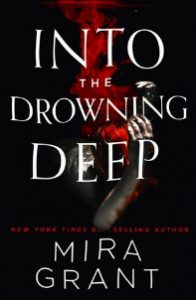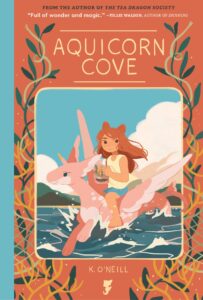Buy this from Bookshop.org to support local bookstores and the Lesbrary!
I first learned about Sabrina Imbler (they/them) last year when my girlfriend and I traveled to Seattle to watch the UConn Women’s Basketball team compete in the Sweet 16. Whenever I travel, I like to visit a local bookstore, which is how we ended up in the gorgeous Elliott Bay Book Company, a woman and queer owned business located in the heart of Seattle’s Capitol Hill neighborhood. When I asked one of the booksellers what LGBT books she recommended, she enthusiastically suggested Imbler’s gay volcano chapbook Dyke (geology) and a signed copy (Imbler’s name flanked by two cute goldfish) of How Far the Light Reaches: A Life in Ten Sea Creatures. Two gorgeous books by a queer person of color? I was elated.
Imbler is a writer and science journalist with a gift for storytelling. How Far the Light Reaches is organized into ten essays wherein Imbler masterfully weaves facts about sea creatures and phenomena with meditations on survival, identity, body image, family, relationships, and community. While the essays stand alone and can theoretically be read out of order, they have a clear throughline. As a reader who began How Far the Light Reaches with limited knowledge of marine biology, I was shocked by how many facts I retained from each essay. Imbler’s essays are crafted with care and intentionality. They don’t just state facts about each sea creature, they reflect on their essence, treating each with reverence.
In “My Mother and the Starving Octopus,” Imbler introduced readers to Graneledone boreopacifica and highlighted one of the most renowned of these purple octopuses: a mother who starved herself for 53 months (four and a half years) while she focused on the task of brooding her eggs. Imbler interspersed reflections on their mother’s sacrifices and on how Imbler learned to find their own body desirable through reveling in queer bodies.
In “Pure Life,” Imbler marveled at deep sea dwellers—vent bacteria, tube worms, and yeti crabs—which survive by using chemosynthesis for energy in the absence of sunlight. Imbler likened hydrothermal vents in the ocean to queer spaces and communities—both representing oases providing rest, nourishment, and safety: “Life always finds a place to begin anew, and communities in need will always find one another and invent new ways to glitter, together, in the dark.”
In “Hybrids,” Imbler juxtaposed their biracial identity (half Chinese, half White) with a hybrid butterflyfish, the offspring of two different species. Imbler examined how The Question: “What are you?” is itself an act of taxonomy. They also reflected on the irony of their frustration with The Question, but also their endless curiosity about other mixed people.
In a word, How Far the Light Reaches is spectacular. The more I reflect upon it, the more I love it. I read it over the course of a few days, but Imbler’s writing is so thought-provoking, you may want to savor the book over time. I really hope Imbler will write another book, but in the meantime, you can check them out at Defector, an employee-owned sports and culture website, where they cover creatures.
Trigger warnings for sexual assault, lack of consent, rape, body mutilation, racism, body image, disordered eating, and animal death/harm.
Raquel R. Rivera (she/her/ella) is a Latina lawyer and lady lover from New Jersey. She is in a lifelong love affair with books and earned countless free personal pan pizzas from the Pizza Hut BOOK IT! program as a kid to prove it.


